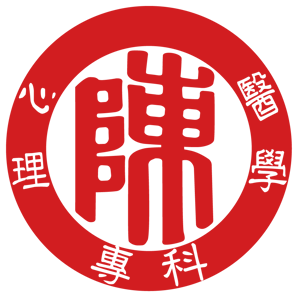Obsessive Compulsive Disorder (OCD)/强迫症
Psychotherapy for Obsessive Compulsive Disorder (OCD)
ERP (Exposure and Response Prevention) is the gold standard psychological treatment for Obsessive Compulsive Disorder (OCD). ERP is specifically designed to reduce obsessions and compulsions by breaking the OCD cycle.
STEP 1: Understanding the OCD Cyclce
1. Obsessions = intrusive, distressing thoughts (e.g., fear of contamination)
2. Compulsions = behaviour or mental acts done to reduce anxiety (e.g., excessive washing)
3. Temporary Relief = reinforces the compulsions, keep the OCD cycle going
STEP 2: ERP breaks this cycle by exposing you to the anxiety trigger but preventing the usual compulsive response.
1. Learn how OCD works and how avoidance and rituals maintain the problem.
2. Understand that anxiety will rise temporarily but will reduce naturally over time (habituation).
3. Stay with the anxiety---it will peak, then reduce on its own (habituation).
STEP 3: Gradual Exposure
1. Start with low-level triggers and intentionally face the feared situation.
2. Example: Touch a door handle without washing hands immediately.
STEP 4: Response Prevention
1. Resist doing the usual compulsive behaviour (e.g., no handwashing, no mental reassurance, no extra checking, no repeating phrases).
2. Stay in the anxiety-provoking situation long enough for anxiety to decrease naturally.
STEP 5: Key Point:
Anxiety will peak but will decline with repeated exposure and with longer exposure times. Practice exposure regularly until anxiety decreases significantly. Over time, your brain learns that the anxiety reduces naturally, and the obsessive thoughts lose power.
STEP 6: Gradually move up to more challenging exposure such as below:
1. Touch desk without washing hands = resist washing (low anxiety)
2. Touch bathroom sink, no washing = resist washing (moderate anxiety)
3. Touch trash bin, no washing for 1 hour = resist compulsions (high anxiety)
STEP 7: Key Point:
Over time, your brain learns the feared outcomes don’t happen or aren’t as bad as expected then this reducing the obsession’s power
STEP 8: Tips for Effective ERP
1. Expect discomfort---this is part of the healing process, it’s a sign the exposure is working.
2. Be consistent and patient; OCD treatment takes time. ERP works best with consistency and patience.
3. Avoid “safety behaviours” that which may reduce anxiety (they undermine ERP).
4. Track progress daily, small improvements build confidence but expect occasional failure.
5. If anxiety spikes, stay in the situation longer rather than escaping.
6. Stay long enough with the anxiety until it starts to drop.
7. Repeat exposures until the trigger causes little or no anxiety.
8. Expect thoughts like “what if something bad happens?”---let them be, no acting on them
STEP 9: Identify Common Triggers
1. Fear of forgetting something important
2. Fear of making a mistake
3. Intrusive thought: “If I don’t check, something bad will happen”
4. Intrusive thought: “I might forget something important”
5. Intrusive thought: “I could cause harm by being careless”
6. Urge to repeat phrases mentally to neutralize the anxiety
7. Touching certain objects
8. Thinking specific thoughts
9. Needing to repeat action
STEP 10: Identify Common Compulsions or behaviours
1. Washing
2. Checking
a. Checking door locks
b. Checking light switches
c. Checking appliances (stove, iron, etc.)
d. Checking emails or messages
e. Checking wallet or keys
3. Mental reassurance
4. Avoiding situations
5. Repeating phrases, phrases you tend to repeat via mentally or out loud
a. “Everything is safe”
b. “Nothing bad will happen”
c. “I’ve done it correctly”
Simple example
1. Problem: Fear of leaving the house unlocked.
2. Compulsion: Checking the lock repeatedly, repeating “everything is safe.”
3. ERP Practice:
a. Lock the door once.
b. Resist checking again or saying safety phrases.
c. Stay with the anxiety---observe it rise, then fall.
d. Repeat daily until this feel manageable. Practice exposure regularly until anxiety decreases significantly
